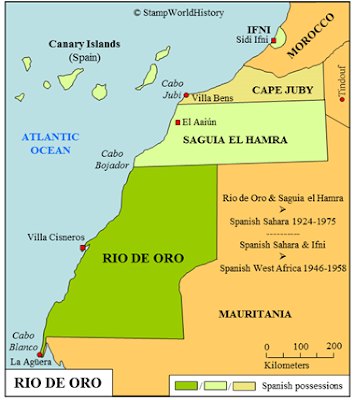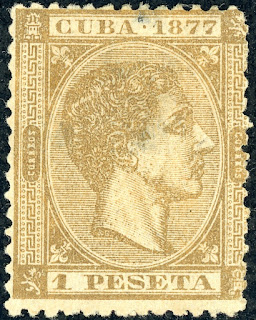Into the Deep Blue
This post is a continuation (1890-1939) of updates for Cuba, showing off the current Deep Blue (Steiner) page in my collection, and the specific added stamp(s).
The previously posted Cuba updates (A & B) are here and here respectively.
Here is the "Child - age four" 1890-97 "Alfonso XIII" stamps issue, as shown in my Deep Blue collection. Born in 1886, Alfonso XIII was king of Spain at birth, as his father (Alfonso XII) had died the previous year. His mother was regent until his sixteenth birthday in 1902. He remained king until 1931.
The 1c olive gray (CV $4) was added.....
....as well as the 2c rose (CV $5).
The higher CV ($10) 20c violet is also new for me.
The 1898 issue shows Alfonso XIII at age twelve, still under the regency of his mother.
The 4c orange (CV$12) is rather uncommon, and new to me.
The 80c red brown, now added to the collection, has a scarce CV value of $25.
The 1899 and 1905 (re-engraved) issues of the Republic, was and is fascinating to me. I remember, as a young collector, noting the difference. What a great memory that is. !!
For the 1910 issue, I added the The 1p slate & black (CV$5).
I really admire the "Map of Cuba" issue of 1914-15
The 50c orange is new to me. (CV$20)
The Portrait stamps can be found unwatermarked (1917-18), and with Wmk 106 (Star) (1925-28).
It seems like many Cuba collectors do not often bother with watermarking these issues, so, although not rare, it is a bit difficult to find all the stamps. Here, fresh for me, is the Wmk Star 8c red brown (CV<$1).
And another addition (CV$1+).
The 1936 Matanzas issue id Perf 12 1/2.
But one can find imperf specimens, valued @ 20% more CV.
The 1939 "General Calixto Garcia" issue is Perf 10.
But the issue also exists imperf. This 5c deep blue is an addition.
The Deep Blue (Steiner) Cuba Special Delivery page.
A nice addition - a 10c orange & blue (CV $10).
The 1899 Postage Due US issue surcharged is complete on this page.
That is because I added the 2c deep claret (CV $5+).
Some more "baby" Afonso XIII issues- this time newspaper stamps.
An addition was the 1894 8m rose (CV $4).
Out of the Blue
I hope you enjoyed a look at my Cuba collection in Deep Blue (Steiner pages), and the recent additions. :-)
Comments appreciated!






































































